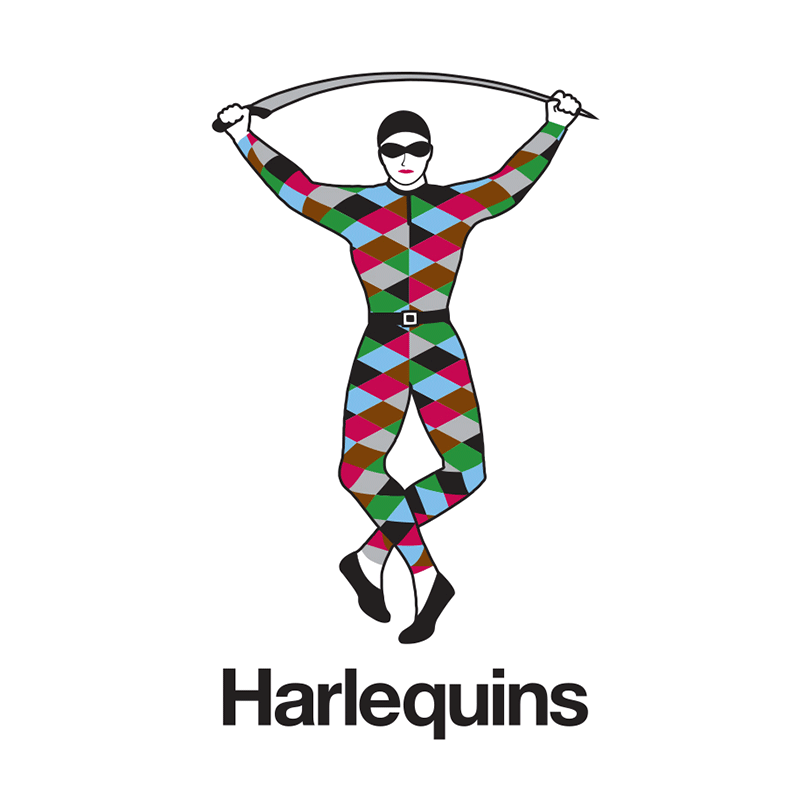Rugby Blog

History of Harlequins
by Leana Kell
Harlequin Football Club are one of the top rugby union clubs in the world, currently competing in the Aviva Premiership. Harlequins, or 'Quins' as they are nicknamed by fans, are based at Twickenham Stoop, a rugby ground based in Hampstead in London.
The Quins were one of the founder members of the RFU, and over the past 150 years they have achieved a great deal, making their mark in 2001 when they became the first British rugby union team to win the European Shield.
More recently, the Quins were crowned winners of the European Challenge Cup in 2011, the Aviva Premiership in 2012 and the LV=Cup in 2013. Below, Centurion takes a look at the rich history of the Quins.
The early years
The Harlequins were founded in 1866, originally forming as part of Hampstead Football Club. The first official game as a rugby union club was played the following year, but it wasn't until four years later in 1870 that Hampstead changed its name to the Harlequin Football Club when the club began to take in members from further afield than Hampstead.
The club wanted to continue to use the same HFC monogram and it's matching motto 'Nunquam Dormio', and so after much debate over names beginning with the letter 'h', the club named itself 'Harlequins'. With the name change came a split in the Club, with half of the members staying with the Harlequins and half forming a new team now known as Wasps. At the same meeting, the club's famous quartered shirts were derived, to replace the previous black and gold still worn today by Wasps.
In the early years, the Harlequins didn't have playing grounds, and up until 1909 they played matches from no less than fifteen different homes to include the Twickenham stadium in 1906, which was the official headquarters of Rugby Union and was where the club eventually made its permanent home three years later.
One of the most memorable performances from the Quins in their early life was against the American Olympic team in 1924 who had come to Europe to defend their Olympic title at the Games in Paris. The team chose to play the club as a warm up fixture, but the Quins ended up beating the America team 21-11! In 1926, two years later, the Quins triumphed again when they beat visiting New Zealand team 11-5.
Twickenham Stoop
Whilst there were many positives to finally having a playing ground of their own, there were a number of drawbacks to playing at Twickenham. The sheer size of the stadium meant that Harlequins' supporters were unable to fill the ground and it therefore lacked atmosphere. In 1963, Harlequins acquired 14 acres of land close to Twickenham which they developed into a training ground and stadium, named the Stoop Memorial Ground, after one of Harlequins' most famous players, Adrian Stoop. The club renamed the stadium 'Twickenham Stoop' in 2005.
The professional era
In 1987, when leagues were introduced to rugby union, Harlequins were placed in the Premier Division, and before long they had cemented their position, winning the club knock out cups in 1988 and 1991 and reaching the finals on three additional occasions. Harlequins were also playing well at international level, winning the European Shield in 2001 against Narbonne with a close score of 42 to 33.
In 2004, the Quins wowed fans once again by becoming the first British team to win the European title, now known as the Parker Pen Cup, beating Montferrand 27 to 27 in a close and very exciting final. However, despite the success in Europe, the Quins did not perform so well in the British league, finishing last in the Zurich Premiership at the end of 2004-05. Subsequently, the team were relegated to National Division One for the first time in the club's history.
After the relegation, the Harlequins battled on and by half way through the 2005/06 season, the club had only lost one of their 26 games to the Exeter Chiefs. By the end of the season, the Quins had gained a match average of 40 points, and won the National Division One title, beating Sedgeley Park 65 to 8 and securing a place back in the Guinness Premiership for the 2006/07 season.
Bloodgate
In 2009, the Harlequins were unfortunately involved in an incident now referred to as 'Bloodgate'. In the Heineken Cup quarter-finals against Leinster, Tom Williams was given orders from the Director of Rugby at the time, Dean Richards, to fake a blood injury so that he could be substituted for Nick Evans, their goal kicker. The move significantly damaged the Harlequin's reputation and forced the sacking of three top officials to include Dean Richards.
Subsequently afterwards, the Harlequins had to work hard to bring the club back from the incident, which included hiring new Director of Rugby and ex Ireland International Conor O'Shea, who brought cultural changes to the club and worked at restoring its reputation.
The 2009/10 season that followed Bloodgate has been described as "brutal" by Nick Evans. The club struggled to an 8th-place finish despite retaining most of the players prior to the scandal. Furthermore, the Quins were knocked out of the Heineken Cup at the group stages, failing to qualify for the competition for the first time in three years. The highlight of the season was the 'Big Game' at Twickenham against Wasps which attracted 76,000 spectators, but saw Quins lose 20-21.
The club did eventually bounce back, going on to win the Amlin Cup at the end of the 2010/11 season, and the Quins followed that up by winning the premiership title in 2012, beating the Leicester Tigers in the final at Twickenham with a score of 30-23 in front of a 81,779 crowd.
The Harlequins are currently in 6th position in the Aviva Premiership 2015/16 tournament.




